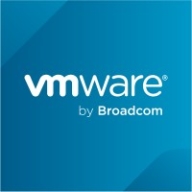

VMware Carbon Black Cloud and N-able EDR are competing in the endpoint detection and response solutions category. VMware Carbon Black Cloud generally has an upper hand in advanced threat detection and scalability, while N-able EDR is favored for its integration capabilities and simpler setup.
Features:VMware Carbon Black Cloud provides advanced threat detection, in-depth analytics capabilities, and high customizability for large-scale implementations. N-able EDR offers strong reporting features, seamless integration with multiple platforms, and simplicity that suits various environments.
Room for Improvement:VMware Carbon Black Cloud could improve its response times, provide clearer documentation, and enhance user interface intuitiveness. N-able EDR needs improvements in automated response features, more seamless update processes, and better error logging mechanisms.
Ease of Deployment and Customer Service:VMware Carbon Black Cloud is generally easy to deploy but may require professional services for complex environments. Customer service is responsive and helpful. N-able EDR has a quick deployment process with clear guidelines, and its customer service is highly rated for being supportive.
Pricing and ROI:VMware Carbon Black Cloud is perceived as a premium solution with a higher upfront cost but promises better long-term ROI due to its robust features. N-able EDR offers competitive pricing and quick ROI due to its efficient integration and easy deployment.
| Product | Market Share (%) |
|---|---|
| VMware Carbon Black Cloud | 0.2% |
| N-able EDR | 0.4% |
| Other | 99.4% |


| Company Size | Count |
|---|---|
| Small Business | 5 |
| Midsize Enterprise | 4 |
| Large Enterprise | 7 |
N-able EDR effectively safeguards against cybersecurity threats like malware and ransomware. With AI-driven capabilities and seamless integration with remote monitoring tools, it offers advanced protection and management for servers and workstations.
N-able EDR, known for its advanced defense mechanisms, utilizes AI and machine learning to enhance threat detection beyond traditional antivirus capabilities. It provides comprehensive visibility with its '360 vision,' integrating smoothly with remote management for unified performance monitoring. While it excels in protecting Windows environments, users seek improvements in mobile support and billing practices. A focus on enhancing licensing efficiency and reducing false positives could further enhance its usability. Ranked highly by Gartner and MITRE ATT&CK, N-able EDR remains a favored choice among users for its effective threat management and detailed reporting functionalities.
What are the key features of N-able EDR?In sectors reliant on Windows-based systems, N-able EDR is deployed as a primary antivirus solution. Its advanced AI and reporting features allow businesses to efficiently manage threat landscapes. However, while it secures servers and workstations, industries requiring mobile device support may find its current capabilities insufficient, prompting requests for broader platform integration.
Fortify Endpoint and Workload Protection
Legacy approaches fall short as cybercriminals update tactics and obscure their actions. Get advanced cybersecurity fueled by behavioral analytics to spot minor fluctuations and adapt in response.
Recognize New Threats
Analyze attackers’ behavior patterns to detect and stop never-before-seen attacks with continuous endpoint activity data monitoring. Don’t get stuck analyzing only what’s worked in the past.
Simplify Your Security Stack
Streamline the response to potential incidents with a unified endpoint agent and console. Minimize downtime responding to incidents and return critical CPU cycles back to the business.
We monitor all Endpoint Detection and Response (EDR) reviews to prevent fraudulent reviews and keep review quality high. We do not post reviews by company employees or direct competitors. We validate each review for authenticity via cross-reference with LinkedIn, and personal follow-up with the reviewer when necessary.